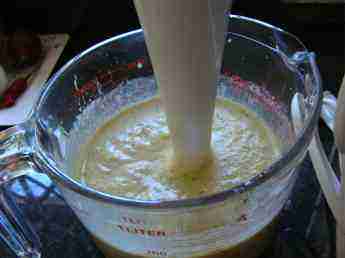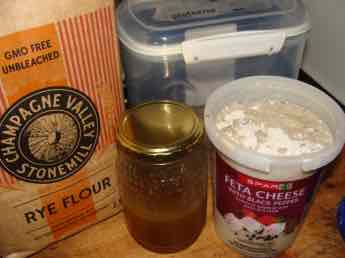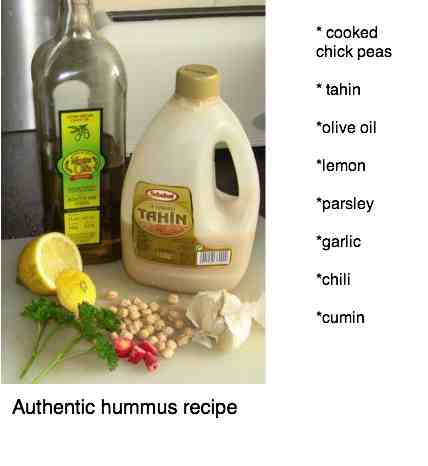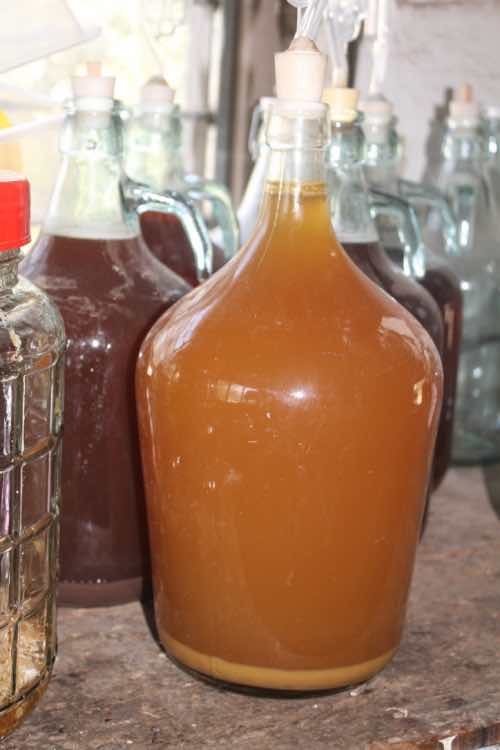Are phytates bad?
Are phytates bad is frequently discussed in nutritional circles; do they significantly inhibit absorption of minerals such as magnesium, zinc and calcium?
Phytates are found in grains such as wholewheat and legumes like soya beans. They are also in flax and sesame seeds; and in nuts. In short, they abound in many foods that we certainly should not be avoiding.
However there is no scientific evidence that consuming large quantities of soya or bread, for example, leads to osteoporosis, a paucity of bone calcium.
Hummus seen below is a good food source of protein used widely by both vegetarians and omnivores; it is based on chickpeas. There is no evidence of increased prevalence of iron-deficiency anaemia[1] despite the fact that phytates do indeed bind to the mineral; and are prevalent in legumes.

This page was last updated by Dr Barrie Lewis on 9th March, 2023.
Although the bioavailability of iron from plant sources is lower, researchers reporting in the American Journal of Clinical Nutrition have found that the risk of anaemia is no higher even in vegans as compared to omnivores.
Phytates do inhibit the absorption of minerals but the loss is negated by the increased vitamin C in vegans' diets.
Phytates are natural chemicals found in many common wholesome foods; the acid form can and does bind with minerals.
These phytates are important in seeds as, during the sprouting period, certain specific enzymes break them down, releasing energy for the young plant.
This is also one other reason why sprouted legumes and grains are more beneficial; they have less phytate.
They have an important role in reducing the glycemic index of starches; this means that they produces less of an insulin-response. The resultant sugars are unlikely to be stored as fat, or give a blood glucose surge.
It is one of the main reasons why Harvard Medical School research, published in the American Journal of Clinical Nutrition declares that women who eat whole grains consistently weigh less. Freshly-harvested corn on the cob would be an example.
This would not however apply to commercial bread. It is virtually impossible to purchase a true wholegrain loaf; it does not exist unless you bake it yourself using 100% flour.
Phytates also mop up free radicals giving them antioxidant properties. They are almost certainly one of the reasons why those enjoying meals with plenty of whole cereals, chickpeas and other legumes have less metastatic illness; nuts and seeds too.
Are phytates bad?
Are phytates bad or good? They are like the nutrients in all whole nourishment; mostly the balance of nature is better than that of food companies. It is true that they may bind calcium and iron reducing their absorption; but they also trap heavy metals like cadmium and lead that are very damaging to the cells. Instead of being stored in the body tissues they are excreted.
Some researchers have found them beneficial in preventing cardiovascular disease too; in addition to their sugar-regulating properties, thus reducing the likelihood of diabetes and helping to manage it better.
Researchers publishing in JAMA confirm that the heart, stroke and diabetes cardiometabolic diseases in almost 50% of cases are directly related to diet.

Certainly in those suffering from iron-deficiency anaemia, making certain that they have plenty of beets, for example, would be important. Red meat too, if you are not a vegetarian; more about that later.
Certainly do not go taking supplements of phytates; most of them can be recognised by having "inositol" on the label. If you want more of their benefits rather enjoy more soya or bake your own 100 percent wholewheat bread.
Supplement companies will sell you anything for a profit; let your food be your medicine.
By reducing raised blood sugar, the great enemy of the inner lining of blood vessels, known as the intima, phytates help prevent hardening of the arteries; and probably give a measure of protection against a severe reaction to the C-19 virus.
They are found in many foods that are also rich in so-called lignans and isoflavonoids; they have a structure very similar to cholesterol, inhibiting its absorption.
Thus phytates work together with these phytosterols protecting our blood vessels from atherosclerosis.
They are also help block the oestrogen sites on the breast reducing metastatic illness.
Much of the deleterious effect of phytates is reduced by soaking, as in the preparation of chickpeas and beans, cooking and the sourdough process; exposing whole grains to bacteria and yeasts overnight before baking allows the enzymes in the flour to start breaking down these substances.
Simply adding a sourdough culture, rich mainly in lactobacillus, to your dough improves the taste and health of these whole grains that have plenty of phytates.
The yeast produces an enzymes called phytase that breaks down the antinutrient; as do the bugs in the happy tum. Large, diverse colonies of bacteria, viruses and other microbes neutralise these substances. Fermented foods are important in reducing their influence on mineral absorption.
We emphasize at this chiropractic site the importance of eating whole foods; vitamin C is found in a great many fruits and vegetables, for example, albeit in small quantities. Two research projects have shown that added ascorbic acid overcomes the phytate load; we would prefer to get it from our diet.
Toss half a lemon in with legumes when they are cooking.
Long traditions have somehow worked this out; thus, for example, the Mediterranean health dish hummus uses chickpeas that have been soaked with lemon pulp which is rich in vitamin C, and then cooked.
If there are any questions like are phytates bad, then simply make sure you are having plenty of citrus, hummus and sourdough bread recipes which reduce any suspected deleterious effects.
Here below is the sourdough culture, enriched with raw honey, spring water with no chlorine and rye flour; it greatly enhances the flavour and reduces the difficulties many have with bread from both gluten and phytates.

And hummus should be made with the whole lemon, including the pulp and a little zest; but not the white pith which is very bitter.

Healthy flour
Healthy flour is never in doubt, unless you suffer from coeliac disease; then you have to commit to a gluten-free diet. Are phytates bad and the cause of ulcerative colitis? Probably not; it's generally considered that the amino acid proline is the fly in the ointment.
A sourdough culture breaks down the offending proline chains provided it is left to prove for twenty-four hours. Many coeliacs can then enjoy the bread.
The phytates are contained in the bran; researchers writing in Scand J Gastroenterol Suppl in a paper entitled "wheat fiber, phytates and iron absorption" report that adding anti-nutrients to a bread roll reduced the iron absorption by fifty percent.
However this inhibition of mineral intake was largely ameliorated by the addition of vitamin C or meat to the meal.A glass of freshly-squeezed orange juice, the lemon in hummus or cold beef on a 100% wholewheat roll would effectively counteract the inhibition of the iron absorption by the phytates in the bran.
Writing in the newsletter from the Friedman School of Nutrition Science, researchers advise that we don't fear anti-nutrients[3]; the benefits of eating foods that contain them far outweigh any potential risks presented by their presence.
We consider the addition of smart bran to meals inadvisable. Rather enjoy 100% wholewheat to increase the fibre in the diet. Preferably soak and even sprout your grains before cooking; and ferment them with lactobacillus.
Other research published in Br J Nutr entitled the effect of wheat bran on the absorption of minerals in the small intestine[2] suggests that only zinc is affected by the addition of wheat bran to the diet.
In short the amount of phytate in the general consumption of 100% wholewheat flour has only minor effects on mineral absorption.
100% wholewheat contains 0.39 to1.35g of phytate/ 100g, whilst bran contains far more; about five times as much.
Because 100% wholemeal flour is so difficult to get in many countries and I have never seen it on sale in South Africa, the general recommendation is that you purchase your own electric flour mill if you are serious about baking; it will pay for itself in a year or two, depending on where you get your wheat.
Direct from the farmer in 2023 it costs only R5,80 per kg; about US15c per pound.
Enjoying your toast with phytates under a bed of vegetables as in this eight colors eggs Florentine would also inhibit the effect of these nutrients on mineral absorption.
All of this is clinically important with new diagnoses liked tired all the time syndrome due to an iron deficiency in the modern diet cropping up. 100% wholewheat is a surprisingly good source of the mineral.
Quick hummus
The chickpeas in quick hummus contain roughly the same amount of phytate as 100% whole wheat, namely 0.28 to 1.60 g/100g. The solution to so-called bad phytates is to soak them first, rinse several times and then cook them.
Again soaking and cooking the chickpeas reduces the influence of the phytate on mineral absorption.
The sesame seed used in quick hummus has been toasted and ground into a paste known as tahini; the cooking reduces the effect of the phytate, rated at 1.44 to 5.36 in raw seeds.
Broccoli walnut salad
Combining foods as in this broccoli walnut salad helps to reduce any possible noxious effects from the nuts and chickpeas; are phytates bad? Probably very minimally and not at all when enjoyed in conjunction with the cooked veggie, raw lettuce and peppers; and feta cheese.
Avoiding all anti-nutrients in your diet means going without many vitally important foodstuffs.
The emphasis in modern nutrition is to let your food be your medicine, rather than supplements.
Home brewing
 Unpasteurised mead provides yeast cells that secrete phytase.
Unpasteurised mead provides yeast cells that secrete phytase.There is disturbing research that even small amounts of commercially available alcoholic beverages are detrimental to wellness; as little as three glasses of wine per week. They are in the main pasteurised destroying any remaining yeast cells.
However the Blue Zone folk, where living to a zestful and vibrant ninety is the norm and ten times as many centurions can be found, drink local unfermented wines with their meals; providing large amounts of yeast cells to break down phytates.
For example in Ikaria there is a strong community of beekeepers. They also brew mead; an unpasteurised beverage made from the fermentation of honey.
Homebrewed wines, beers and meads contribute large numbers of yeast cells to our food to reduce the influence of phytates on mineral absorption; and add to a healthy microbiome.
Dr Steven Gundry
Eminent cardiologist Dr Steven Gundry provides very convincing thoughts on why we should fear and avoid anti-nutrients; but then totally ruins his case by telling us we can enjoy all the foods rich in them provide we take his supplement.
We are not impressed, Dr Gundry!
Useful links
- Go from are phytates bad to healthy flour.
- See what Dr Weil says about are phytates bad or good?
When browsing these links use right click and "Open Link in New Tab", or you may get a bad gateway signal.
- Home
- Osteoporosis
- Are Phytates Bad
Did you find this page useful? Then perhaps forward it to a suffering friend. Better still, Tweet or Face Book it.

